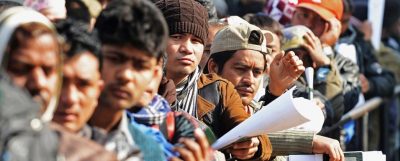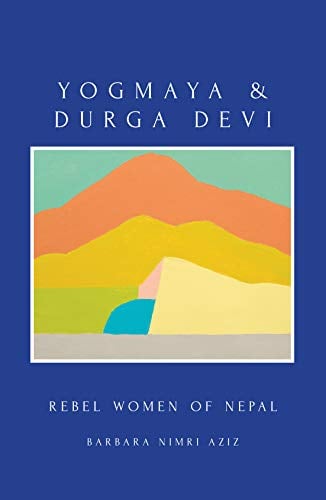Political Theater in Nepal Is Driving Citizen Flight

All Global Research articles can be read in 51 languages by activating the Translate Website button below the author’s name.
To receive Global Research’s Daily Newsletter (selected articles), click here.
Click the share button above to email/forward this article to your friends and colleagues. Follow us on Instagram and Twitter and subscribe to our Telegram Channel. Feel free to repost and share widely Global Research articles.
***
With unwelcome regularity, every few months Kathmandu Valley experiences a nationally watched theatrical production. This month’s will surely be unrivalled. Yet, each new production seems to outdo the last in commercial evaluations and the celebrity of its leading actors.
At the same time however, apart from eager journalists, the public does not attend. In fact, the Nepali public is largely focused beyond the valley, further than Everest, further than Darjeeling and Assam in N.W. India, the former go-to-destination for fleeing disenchanted youths and dreamers 3-4 generations ago. (Today, as we will see, they prefer to watch this drama from much further afield.)
Today’s dramas – offering commercial successes (for some), rich fodder for investigative journalists, and political accolades or disrepute for others – are an unending series of scandals. All have a similar theme – riches through corruption.
For the past decade, increasing as the national treasury of this new democracy swells, corruption and greed have grown at a rapid rate. It seeps into every corner of the nation, along newly-bulldozed roadways to once-remote nomad camps, into district headquarters in far flung provinces, and through engorged urban centers. It embraces a visa-and-passport racket; it spills over the gilded surfaces of the country’s holiest Hindu site; it entraps politicians of all political persuasions; it captures former ministers, members of parliament and their staff, a myriad of government agencies along with Nepal’s richest, most prominent merchants.
To review only the three most recent dramas: there’s the Bhutanese passport scandal. Almost 20 years ago, 100,000 ethnic Nepalese who’d been expelled from Bhutan where they’d been settled for generations, were sequestered in refugee camps within Nepal. Following international appeals, they were granted refugee status and could apply for asylum abroad. (The U.S. accepted more than 85,000.) But what about ordinary Nepalis? (Hadn’t thousands managed foreign visas from their fraudulent claims of lost homes in the 2015 earthquake?) It seemed unfair to the tens of thousands who wait more than two years even for a tourist visa to America, for example. Some aspiring-emigres who decided to claim Bhutanese refugee status won the sympathy of officials in relevant ministries who would furnish the necessary papers for 1-2 million rupees ($US 10,000- 18,000) each. When the racket was exposed, numerous culprits were identified and charged with treason, fraud and forgery; they included ministerial level officials, a police chief and a deputy prime minister along with lower-level clerks. (How any of the foreign embassies who might stamp these false papers responded to the exposé is unrecorded.) Nepal’s media had a field day publicizing the details, naming names; officials who had pursued the criminals were applauded. But how many of the named and accused were exempted, how many convicted, and how many of all of them are actually in jail today seem to be uncertain, or forgotten.
The obscurity that follows these exposés may be because, hardly a month later, a new political theater eclipses the last drama. Journalists excitedly pursue new celebrities. (Nepal’s press, a throng of papers, TV stations and online outlets, arose following the arrival of free speech – starting in 1990 and swelling after the blossoming of democracy in 2008. With so much corruption, between inter-and-intra-party scandals, press attention has increasingly turned in this direction, even as questions about the integrity of the nation’s young free press are raised.)
That Bhutanese ID drama follows a much discussed ‘gift’ of gold by Nepal’s former prime minister K.P. Oli and former president Mrs. B.D. Bhandari. Together, perhaps in search of spiritual merit after retirement, the pair committed government funds to purchase a massive quantity of gold (Jalahari) to adorn Nepal’s most sacred site Pashupatinath Temple in Kathmandu. An initial revelation that the funds were not their own, but from the State Treasury, reportedly resulted in the plates being exhumed and the engraved names of their esteemed benefactors removed. (As far as is known the Treasury still honored the cost of the gift.) The final act of that drama highlighted a supposed discrepancy (approximately 10 kilograms of gold) between the 100 kg weight of the reported gift and what was eventually recorded.
Sometime after or between these hot affairs was another equally serious production, a spectacular property deal. Called the Lalita Niwas land scandal. It too involved ministers and other officials, businessmen, and huge sums of money. Lalita Nawas is a tract of government property (about 15 hectares) in Baluwatar, one of the capital’s most elite suburbs.) Corruption charges were filed against 175 individuals upon discovery that plots there had been illegally transferred in the name of individuals through collusion with officials, among then land revenue personnel and the election commissioner. The sums involved are staggering. Investigations are ongoing (as jails fill, or trials are delayed).
The effect of this on the public is profound, and long-lasting. After less than two decades of democratic liberties most Nepalis are losing confidence in their modern republic. (Maoists who fought to end the dictatorship are among the most corrupt, it is believed.)
A deeper, more troubling consequence of the corruption is found among school graduates and in applications for foreign visas. “Education is now a means to escape the country”, observes secondary school director Bhagwan Shrestha. From his many years in the field, he sadly concludes that education for the sake of learning is of low priority: “We are producing educated Nepalis for outside”. Few want to stay. He also notes the difficulties simple families endure to pay increasingly high school fees, hoping this would open a path abroad for their children. “Their dream is for their children to escape”, Shrestha adds. “Education is simply a ticket out.” He also suggests that this condition lowers the appeal of teaching as a profession.
Youths who leave after the compulsory 10th class have aspirations to find work as laborers in Malaysia and Gulf Cooperation Council states. Those able to complete university do so with their eyes on Australia, Europe and the U.S. and Canada, with the U.S. most preferred. One thirty-year-old who intends to stay in Nepal notes: “From my graduating class of 131 students, almost 90 are outside – working abroad”.
One need only glance at the lines of aspirants at the gates of foreign embassies. From the airport, flights leave night and day ferrying mainly young men abroad. (800,000 are expected to be issued labor permits this year). They and their families consider themselves fortunate, despite tales of difficult conditions abroad. Their hardships, often exaggerated, may be sympathetically recorded in international papers. But however severe the stresses and risks abroad, Nepali youths view those as preferable to dim prospects at home where corruption is so invasive. With their overseas earnings they can leverage possibilities for themselves in their homeland. In fact, most return with sufficient savings to open a modest business, pay off mortgaged land, and afford school fees for their children to obtain a better education (and perhaps win a visa to a first-class destination!). Their remittances back to Nepal are not insubstantial. If Nepal’s government were really responsible, instead of the outflow generated by corruption and the lack of opportunities for citizens, it could foster local industry and agricultural innovation. What enterprise one finds in Nepal is in the private sector; this in a nation which, during its 15 years of democracy, has largely been led by socialist parties (Maoist, Marxist and Communist) with access to billions of rupees to offer fraudsters.
*
Note to readers: Please click the share button above. Follow us on Instagram and Twitter and subscribe to our Telegram Channel. Feel free to repost and share widely Global Research articles.
Barbara Nimri Aziz whose anthropological research has focused on the peoples of the Himalayas is the author of the newly published “Yogmaya and Durga Devi: Rebel Women of Nepal”, available on Amazon.
She is a regular contributor to Global Research.
“Yogmaya and Durga Devi: Rebel Women of Nepal”
By Barbara Nimri Aziz
A century ago Yogmaya and Durga Devi, two women champions of justice, emerged from a remote corner of rural Nepal to offer solutions to their nation’s social and political ills. Then they were forgotten.
Years after their demise, in 1980 veteran anthropologist Barbara Nimri Aziz first uncovered their suppressed histories in her comprehensive and accessible biographies. Revelations from her decade of research led to the resurrection of these women and their entry into contemporary Nepali consciousness.
This book captures the daring political campaigns of these rebel women; at the same time it asks us to acknowledge their impact on contemporary feminist thinking. Like many revolutionaries who were vilified in their lifetimes, we learn about the true nature of these leaders’ intelligence, sacrifices, and vision during an era of social and economic oppression in this part of Asia.
After Nepal moved from absolute monarchy to a fledgling democracy and history re-evaluated these pioneers, Dr. Aziz explores their legacies in this book.
Psychologically provocative and astonishingly moving, “Yogmaya and Durga Devi” is a seminal contribution to women’s history.


